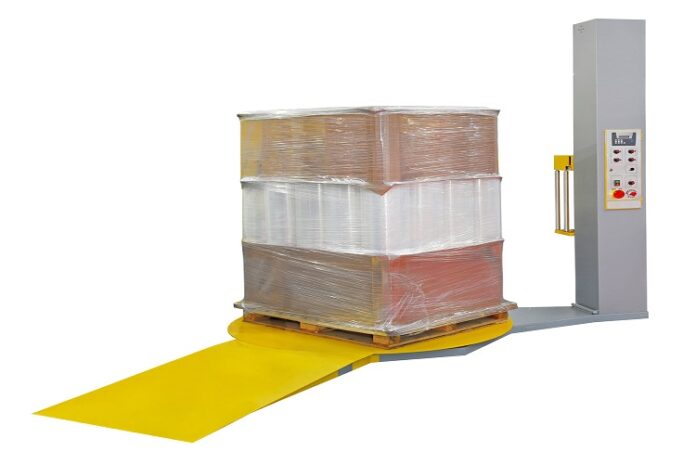Choosing the right pallet wrapper (also known as a stretch wrapper) is essential for optimizing your palletizing and shipping operations. There are several factors to consider when selecting the right pallet wrapper for your needs. Here’s a step-by-step guide to help you make an informed decision;
Table of Contents
Budget constraints
Budget is an unavoidable discussion topic when investing in new equipment. While higher-priced pallet wrapping machines may come with advanced features, weighing the cost against your operational requirements is important. Be sure to identify the crucial features you need and consider options within your price range that fulfil those requirements. Look for models that allow for future upgrades so you can scale up your investment as your business grows.
Load size and weight
Next, consider the size and weight of the loads you’ll be wrapping. A heavy-duty turntable pallet wrapper might be the best option for heavier loads, whereas a robotic wrapper can handle loads within a specific weight range. Be sure to check the manufacturer’s recommended maximum weight and height specifications for each type of pallet wrapping film, ensuring it accommodates your load requirements.
Film types
Different pallet wrappers use different types of stretch films. The most common are hand stretch films, machine stretch films, and pre-stretched films. Depending on your unique requirements, you may prefer one type of film over another, so choosing a wrapper compatible with the chosen film is crucial.
Space constraints
The size of your facility is another crucial factor in selecting a suitable pallet wrapper. When shopping for a pallet wrapper, keep in mind the available floor space and ceiling clearance in your warehouse. There are compact options for smaller spaces and larger models for facilities with more room. Additionally, take note of the wrapper’s mobility if you need to rearrange your warehouse layout.
Film pre-stretch
Film pre-stretch stretches the film before it’s applied to the pallet, providing better load containment and reducing material usage. Perforated pallet wrap comes with pre-stretch capabilities, while others don’t. Evaluating your film consumption requirements and budget will guide you towards the most suitable option.
User-friendliness
User-friendly controls and easy navigation are crucial in minimizing training time and the potential for errors. Examine the machine’s interface and features accessible both for operators and management. Consider the ability to program wrapping cycles, track usage, and monitor your wrapping process remotely.
Durability and maintenance
Long-lasting, reliable equipment is always the goal. Regarding pallet wrappers, the market offers a range of materials and quality. When examining the build quality, take note of the following:
- Frame construction: Look for heavy-duty steel construction for improved durability.
- Load capacity: Ensure the pallet wrapper’s capacity matches your operational requirements.
- Maintenance: Select a model with accessible parts, making maintenance and repairs more manageable.
Final Thoughts
When it’s time to choose a pallet wrapper for your business, make sure you take the time to consider your needs, understand the different types of wrappers, and think about factors like load size, film types, and film pre-stretch. By considering these considerations, you’ll be well-equipped to select the ideal pallet wrapper for your operations, boosting your efficiency and protecting your products in the process.









